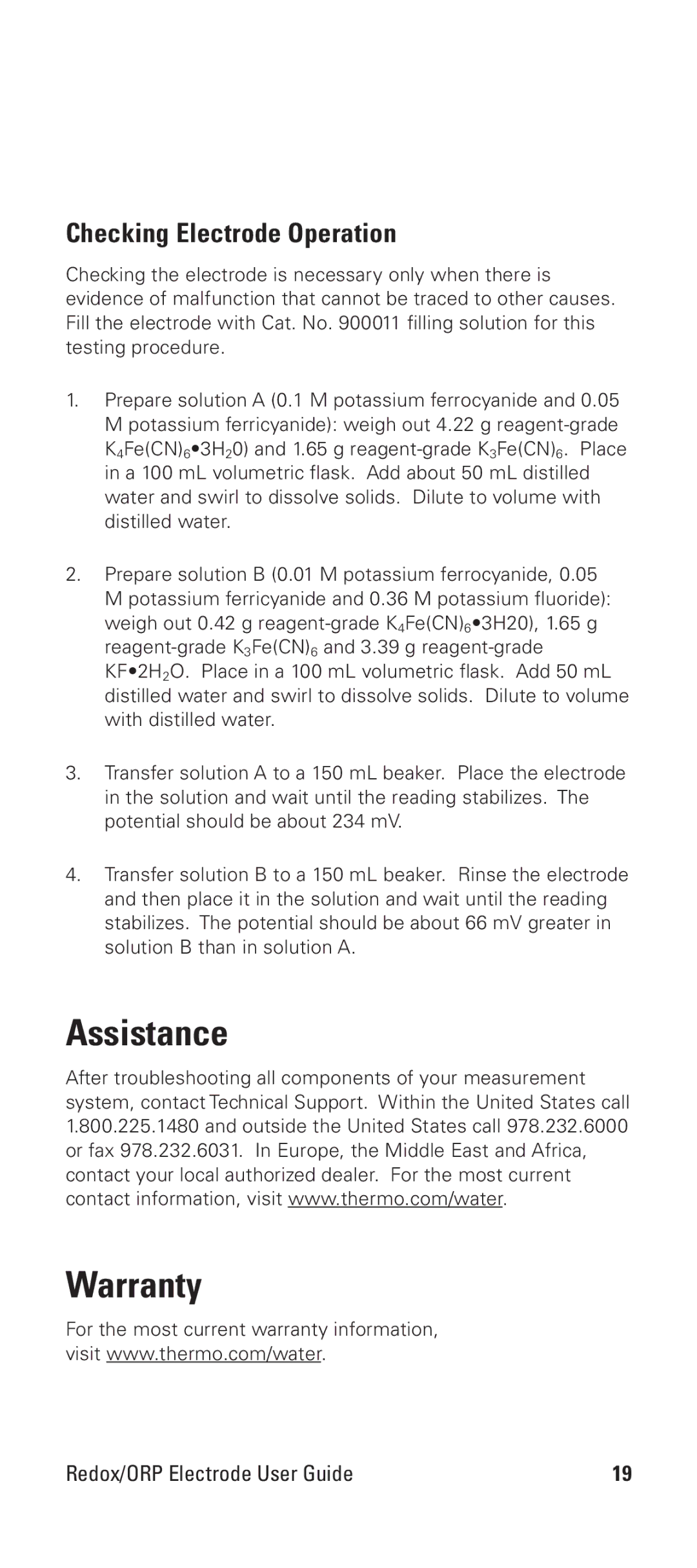Checking Electrode Operation
Checking the electrode is necessary only when there is evidence of malfunction that cannot be traced to other causes. Fill the electrode with Cat. No. 900011 filling solution for this testing procedure.
1.Prepare solution A (0.1 M potassium ferrocyanide and 0.05 M potassium ferricyanide): weigh out 4.22 g
K4Fe(CN)6•3H20) and 1.65 g
2.Prepare solution B (0.01 M potassium ferrocyanide, 0.05 M potassium ferricyanide and 0.36 M potassium fluoride):
weigh out 0.42 g
3.Transfer solution A to a 150 mL beaker. Place the electrode in the solution and wait until the reading stabilizes. The potential should be about 234 mV.
4.Transfer solution B to a 150 mL beaker. Rinse the electrode and then place it in the solution and wait until the reading stabilizes. The potential should be about 66 mV greater in solution B than in solution A.
Assistance
After troubleshooting all components of your measurement system, contact Technical Support. Within the United States call 1.800.225.1480 and outside the United States call 978.232.6000 or fax 978.232.6031. In Europe, the Middle East and Africa, contact your local authorized dealer. For the most current contact information, visit www.thermo.com/water.
Warranty
For the most current warranty information, visit www.thermo.com/water.
Redox/ORP Electrode User Guide | 19 |
